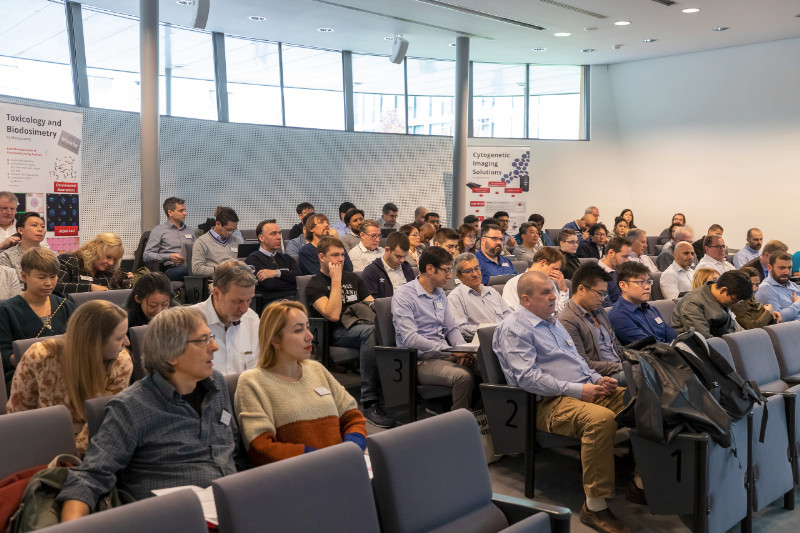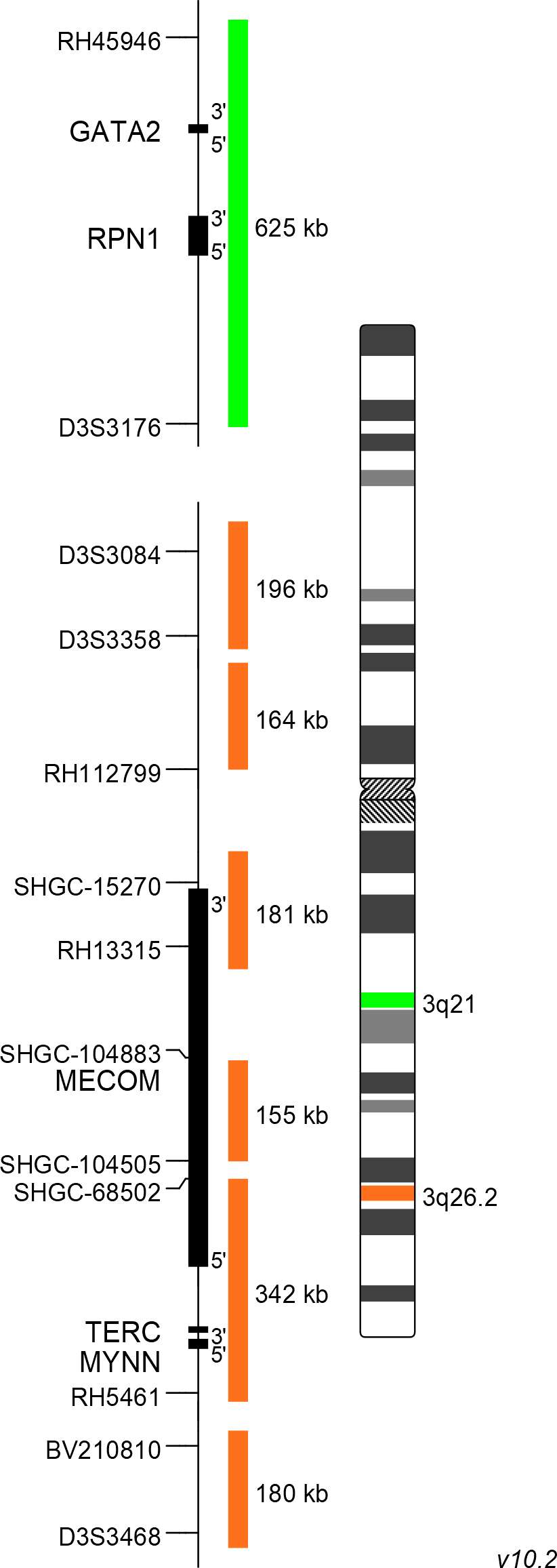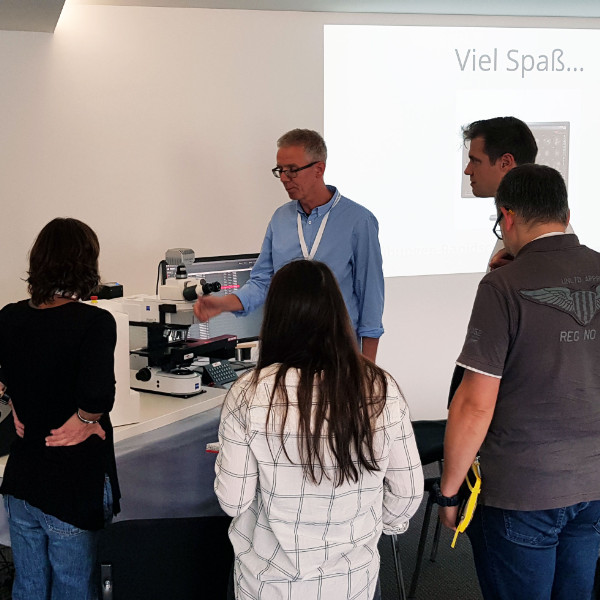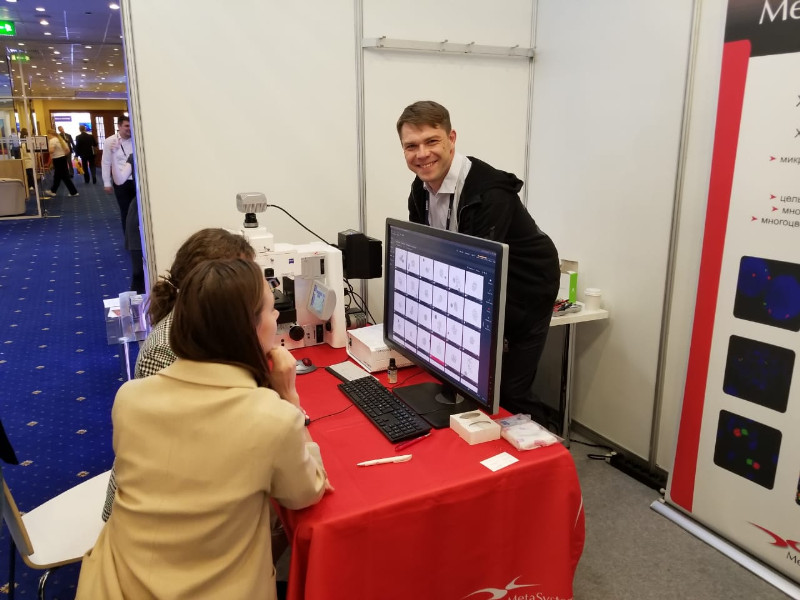About 100 guests from 36 countries met on the XVIII. MetaSystems Distributor Meeting (DM) in November to exchange experiences and to get to know new trends and developments at MetaSystems.

Our internet site may contain information that is not approved in all countries or regions. To ensure accuracy of content, please select your country/region of residence. Choose International if your country is not listed.
This information will be saved using cookies. To find out more about cookies, read our Privacy Policy.
Please select your country of residence. Choose International if your country is not listed.
Our internet site may contain information that is not approved in all countries or regions. To ensure accuracy of content, it is required that you select the site which is appropriate for your country of residence.
This probe is IVDR-certified in compliance with the Regulation (EU) 2017/746 on in vitro diagnostic medical devices (IVDR).
MetaSystems Probes has already certified a large part of its portfolio, according to IVDR. For organizational reasons, we currently provide only the IVDD product.

XL t(3;3) GATA2/MECOM DF consists of a green-labeled probe hybridizing to the GATA2 gene region at 3q21 and an orange-labeled probe hybridizing to the MECOM gene region at 3q26.2.
Probe maps are created in accordance with the intended purpose of the product. Solid colored bars do not necessarily indicate that the probe fully covers the indicated genomic region. Therefore, caution is advised when interpreting results generated through off-label use. Probe map details based on UCSC Genome Browser GRCh37/hg19. Map components not to scale. Further information is available on request.
The chromosomal aberrations inv(3)(q21q26.2) and t(3;3)(q21;q26.2) characterize a distinct entity within patients with acute myeloid leukemia (AML). Their incidence in AML is about 1-2.5% and patients have an unfavorable prognosis and low response to chemotherapy.
Inv(3)/t(3;3) juxtapose the GATA2 enhancer with the MECOM locus which results in overexpression of EVI1. The EVI1 gene is located in 3q26 and is involved in hematopoietic stem cell maintenance. EVI1 is, together with MDS1, located in the ´MDS1 and EVI1 complex locus´ (MECOM) and is the major player in this subtype of AML.
Furthermore, structural rearrangements caused by inv(3)/t(3;3) result in reduced GATA2 expression which may contribute to the oncogenic potential of this aberration. GATA2 is located in chromosomal region 3q21 and is involved in development and proliferation of hematopoietic stem cells. Several other recurrent 3q26 rearrangements such as t(3;21)(q26;q22), t(3;12)(q26;p13) and t(2;3)(p15-23;q26) are known and many more rearrangements may occur.

Normal Cell:
Two green (2G) and two orange (2O) signals.

Aberrant Cell (typical results):
One green (1G), one orange (1O), and two greenorange colocalization/fusion signals (2GO) resulting from a reciprocal translocation between the respective loci.

Aberrant Cell (typical results):
Two green (2G) and three orange signals (3O) resulting from a translocation with breakpoints in the orange labeled gene region and another unknown chromosome.
Neon, the outstanding MetaSystems case and image management system, offers many tools and helpful gadgets to streamline routine workflows, for example in cytogenetics labs. The second MetaSystems User Day, addressed to MetaSystems clients from Germany, Austria, and Switzerland, provided in different workshops knowledge helping to unleash the full power of the system.

The Congress 'Genetics of XXI Century' in Moscow, Russia (May 2019) has been one of the most important events for the professional international community of geneticists. Our partner company in Russia OOO MetaSystems considered it a good occasion to present the new camera CoolCube 4 connected to a state-of-the-art Neon system to the public.
